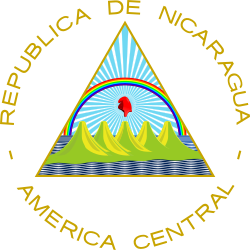 |
|---|
General elections were held in Nicaragua on 8 December 1936 to elect a President, half of the Deputies and one-third of the Senators of the National Congress.
Contents
On 16 June the Liberal party met in León to hold its convention and name its candidate for the presidency. The nomination of Anastasio Somoza García was totally uneventful. "The old party leadership was swept aside in favor of a new group of younger, more dynamic and ambitious men." [1]
Ex-President Emiliano Chamorro Vargas left for Costa Rica on 23 June 1936 claiming that his life was in danger. After Chamorro's departure from the country, the Conservatives were divided as to what to do in the coming elections. One faction, headed by Chamorro, decided to carry on with the candidacy of Leonardo Argüello Barreto according to the Liberal-Conservative pact signed just before Juan Bautista Sacasa was removed from office. A dissident faction of anti-Somoza Liberals formed the Constitutionalist Liberal Party, which joined up with the Chamorrista Conservatives to support Argüello and Espinoza as his vice-presidential candidate. Somoza's response was to promote the formation of a rival Conservative party that would support his candidacy. Somoza's Conservatives organized the so-called Conservative Nationalist Party. [2]
In November Somoza resigned as Jefe Director of the National Guard so that his ascent to power could remain within the constitution. [3]
In November Conservative and Liberal committees supporting the bi-partisan agreement met and decided to abstain from voting on 8 December. Their decision had the practical result of withdrawing the Argüello-Espinosa ticket. [4]
"Although he ran in the 1936 elections without any significant opposition, Somoza built an electoral coalition that included urban businessmen, some urban and rural laborers, rightist middle-class groups, and some ex-Conservatives. In the years to come, Somoza would maintain this coalition through an extensive patronage network that allowed him to govern without having to rely on the day-to-day coercion found in Central America’s military-authoritarian regimes." [5]